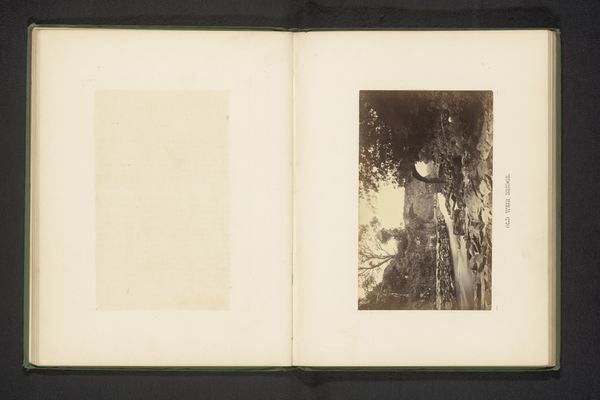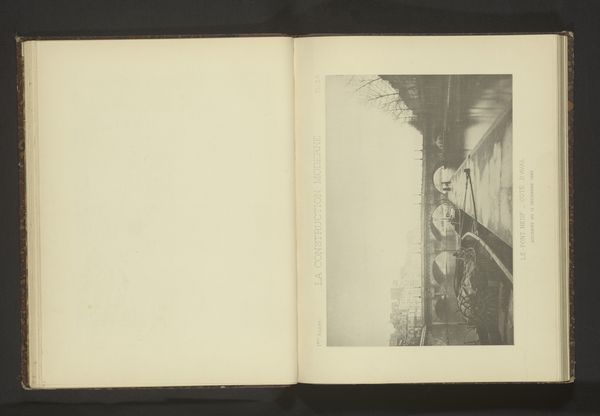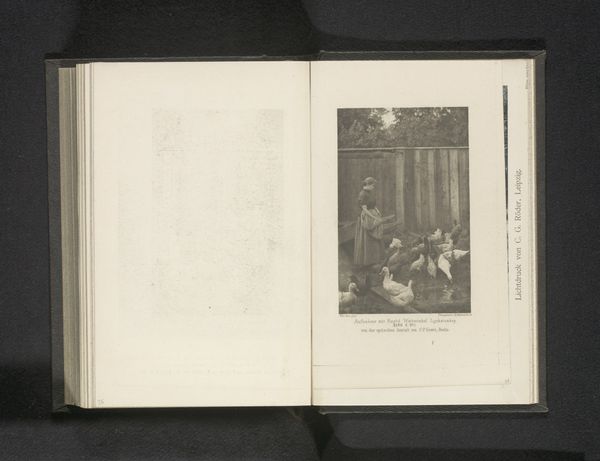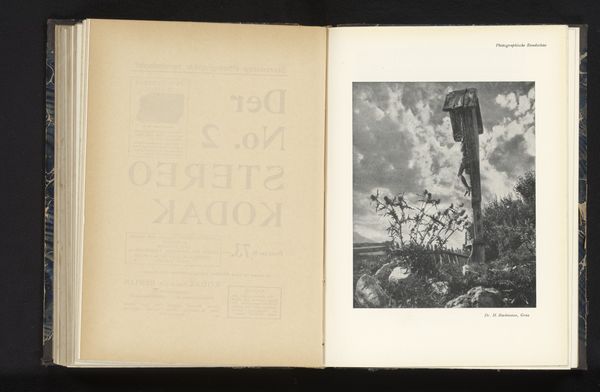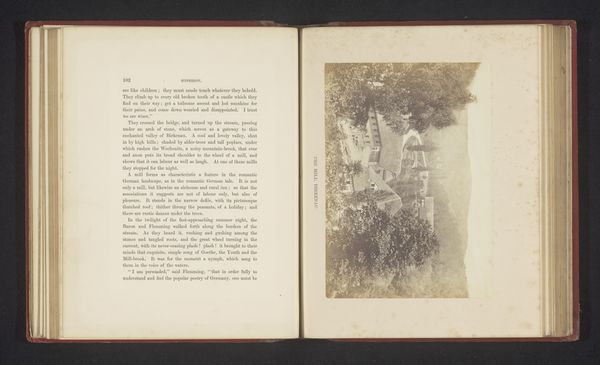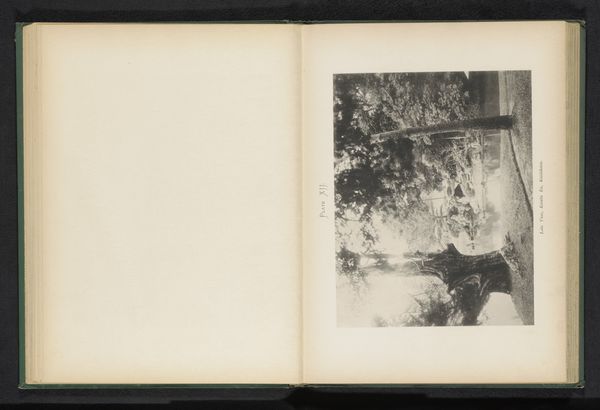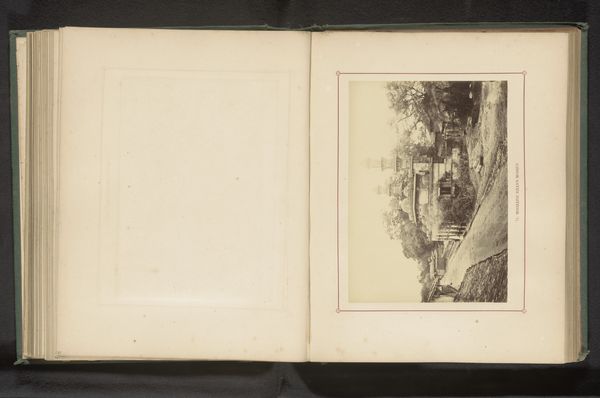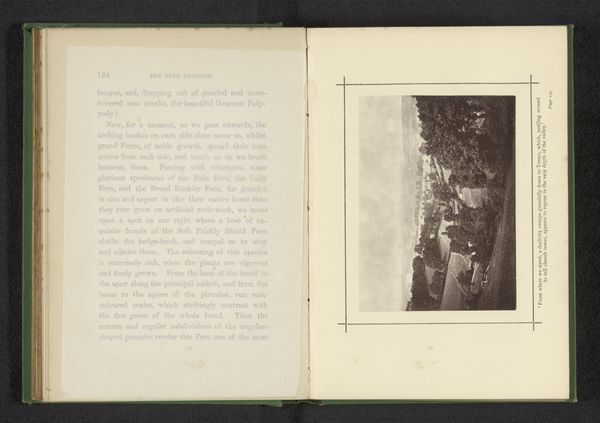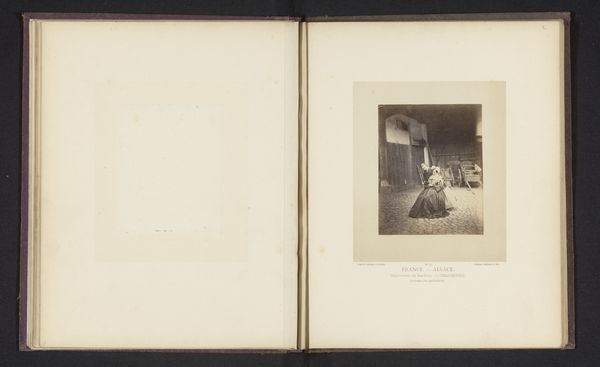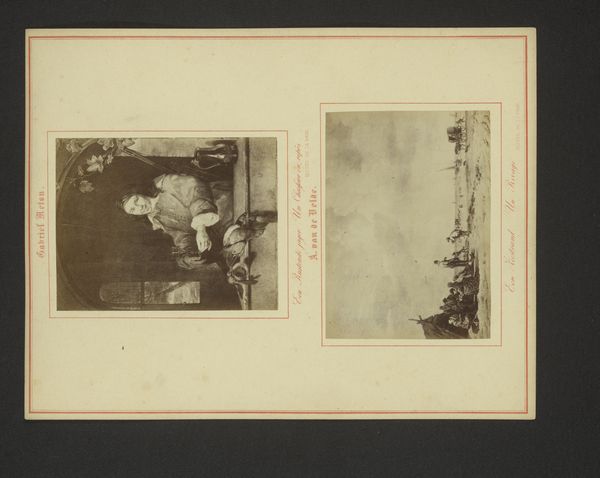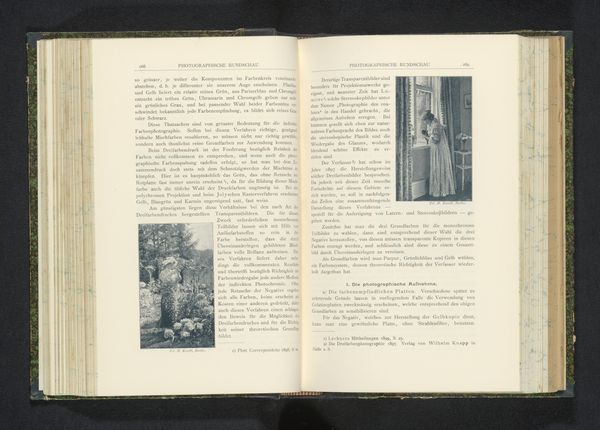
#
type repetition
#
aged paper
#
homemade paper
#
hand drawn type
#
personal sketchbook
#
hand-drawn typeface
#
fading type
#
thick font
#
handwritten font
#
historical font
Dimensions: height 166 mm, width 125 mm
Copyright: Rijks Museum: Open Domain
Curator: Let’s examine this open book featuring a portrait by Clarence Hudson White, taken before 1901. It presents a woman amongst the trees. I find it to be quite an arresting study in tonal values and the relationship between figure and ground. Editor: Yes, initially, my eye is drawn to the photographic reproduction nestled next to the aged paper of the adjacent page, suggesting this book and its materials possess as much importance as the images bound within. I wonder about its production; What paper was used and how does that influence meaning? Curator: I find the juxtaposition intentional. Note how the photographic process, which emphasizes precise details and tonal gradation, stands in contrast to the printed matter facing it. The typeface becomes an integral visual component of the overall aesthetic, not merely a conveyance of information. Editor: But doesn't this choice point toward a broader understanding of photographic processes during White’s era? The handwritten and historical font on the opposite page, seemingly reproduced or created through transfer, reminds us of the labour embedded in artmaking – photographic or not. I wonder if the choice to print in this manner was to make the artwork more handmade, challenging what constitutes as art, craft or industrial creation? Curator: Indeed. Furthermore, consider the visual rhyming: the soft-focus, evocative image of the woman mirrored on the aged paper through thick, faded letters creating type repetitions. Both offer forms of repetition that guide and support an understanding of the artwork. Editor: True. It underscores the intersection of nature and technology in White’s work, showing photographic skill as labor with social consequence: what messages can be circulated more easily through photographic means or artistic creation using unique methods. What audiences could this work engage at the time of its publication? Curator: Precisely. I hadn't thought about White’s broader influence beyond strictly photography! It's so interesting how a photograph placed next to distinct materiality can shape our thinking. Editor: And for me, reflecting on labor and materials lets me explore what White and his contemporaries tried to tell a late 19th/early 20th-century audience.
Comments
No comments
Be the first to comment and join the conversation on the ultimate creative platform.

